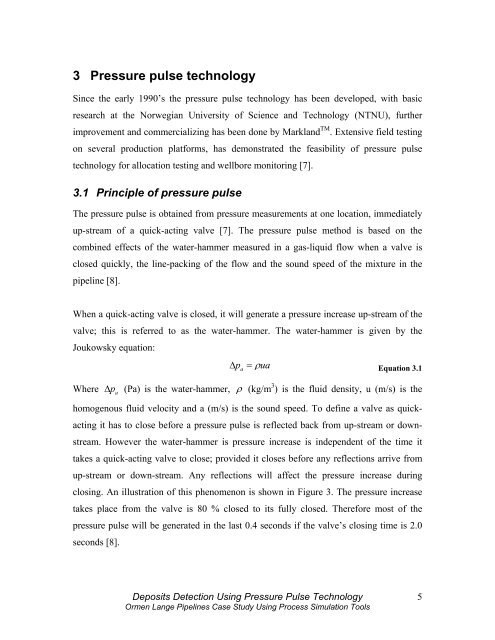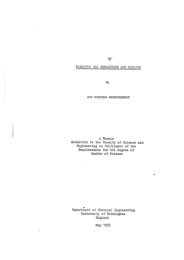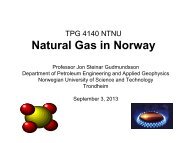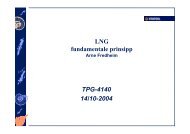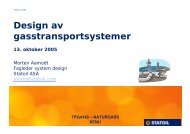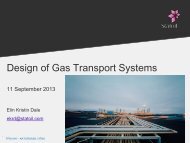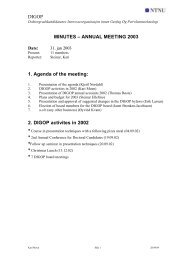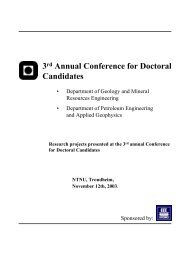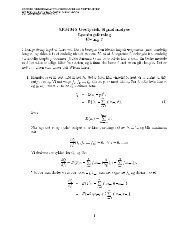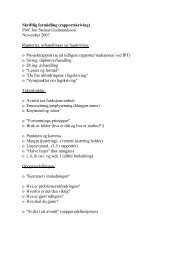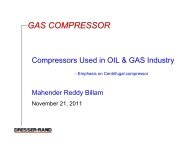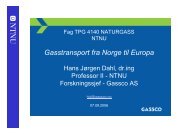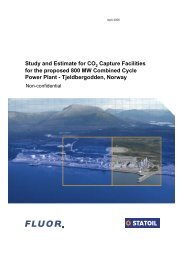Ormen Lange Utbyggingen - NTNU
Ormen Lange Utbyggingen - NTNU
Ormen Lange Utbyggingen - NTNU
You also want an ePaper? Increase the reach of your titles
YUMPU automatically turns print PDFs into web optimized ePapers that Google loves.
3 Pressure pulse technology<br />
Since the early 1990’s the pressure pulse technology has been developed, with basic<br />
research at the Norwegian University of Science and Technology (<strong>NTNU</strong>), further<br />
improvement and commercializing has been done by Markland TM . Extensive field testing<br />
on several production platforms, has demonstrated the feasibility of pressure pulse<br />
technology for allocation testing and wellbore monitoring [7].<br />
3.1 Principle of pressure pulse<br />
The pressure pulse is obtained from pressure measurements at one location, immediately<br />
up-stream of a quick-acting valve [7]. The pressure pulse method is based on the<br />
combined effects of the water-hammer measured in a gas-liquid flow when a valve is<br />
closed quickly, the line-packing of the flow and the sound speed of the mixture in the<br />
pipeline [8].<br />
When a quick-acting valve is closed, it will generate a pressure increase up-stream of the<br />
valve; this is referred to as the water-hammer. The water-hammer is given by the<br />
Joukowsky equation:<br />
∆ pa<br />
= ρua<br />
Equation 3.1<br />
Where<br />
∆p a<br />
(Pa) is the water-hammer,<br />
ρ (kg/m 3 ) is the fluid density, u (m/s) is the<br />
homogenous fluid velocity and a (m/s) is the sound speed. To define a valve as quickacting<br />
it has to close before a pressure pulse is reflected back from up-stream or downstream.<br />
However the water-hammer is pressure increase is independent of the time it<br />
takes a quick-acting valve to close; provided it closes before any reflections arrive from<br />
up-stream or down-stream. Any reflections will affect the pressure increase during<br />
closing. An illustration of this phenomenon is shown in Figure 3. The pressure increase<br />
takes place from the valve is 80 % closed to its fully closed. Therefore most of the<br />
pressure pulse will be generated in the last 0.4 seconds if the valve’s closing time is 2.0<br />
seconds [8].<br />
Deposits Detection Using Pressure Pulse Technology<br />
<strong>Ormen</strong> <strong>Lange</strong> Pipelines Case Study Using Process Simulation Tools<br />
5


